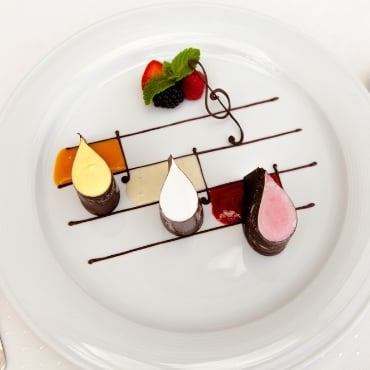Chefs (and everyone else) have long known that the aroma and appearance of a dish profoundly influence how it will taste. But now the new science of neurogastronomy indicates that the sounds in the spaces where food is served also influence taste.
 Neurogastronomy is essentially “what your brain does when you eat something,” according to research on American Public Radio’s Marketplace. And although the advances in neuroscience over the past twenty years have changed the game, the science of neurogastronomy existed in one form on another since the early nineteenth century. A book aptly and simply titled “Neurogastronomy,” neuroscientist Gordon M. Shepherd explores the “human brain flavor system” and analyzes the roles smelling, seeing, hearing and touching play in taste.
Neurogastronomy is essentially “what your brain does when you eat something,” according to research on American Public Radio’s Marketplace. And although the advances in neuroscience over the past twenty years have changed the game, the science of neurogastronomy existed in one form on another since the early nineteenth century. A book aptly and simply titled “Neurogastronomy,” neuroscientist Gordon M. Shepherd explores the “human brain flavor system” and analyzes the roles smelling, seeing, hearing and touching play in taste.
While neuroscientists are leading the charge, neurogastronomy research is far from an obscure academic pursuit. Food companies like Unilever and Nestlé are exploring ways in which they can use our different senses to make food appealing. And Starbucks, the ultimate purveyor of a taste experience, has hired composers to take the neurogastronomic research of Oxford psychologist Charles Spence and create the perfect soundtrack for drinking coffee.
If you have a fun or interesting story idea or recipe, a story about your restaurant or a customer experience, we would love to hear from you. The best stories and recipes will be published on our blog and distributed to the HBC Community, nationally and potentially internationally. Further, we will reference your name and establishment for bringing it to our attention. A little publicity can always help to grow your business and awareness. Submit your ideas here.


